4 sept 2018

In remarks made at annual security conference hosted in IDC Herzliya college, Bayit Yehudi leader warns that failure to deal with Hamas today, as Israel seeks to 'buy time' in pursuit of ceasefire talks, means meeting 'an even bigger enemy' later.
Bayit Yehudi leader Naftali Bennett implied on Tuesday that Israel must “mow the lawn” in Gaza, employing a common metaphor used in reference to stopping attacks on Israel from the Hamas-ruled strip.
“In the media there is an acute dispute about two approaches—cutting all connection with the enemy or continuing contact and long-term security,” Bennett said in a speech delivered at the annual International Institute for Counter-Terrorism Conference in Herzliya.
“In our neighborhood, those who don't mow the lawn, are mowed by the grass,” the education minister said at the opening of his remarks.
“I think that when Rabin chose to go to Oslo he thought that Israel had no strength for continued conflict,” said Bennett in reference to the former prime minister Yitzhak Rabin who signed the Oslo Accords in the 90s with the Palestine Liberation Organization.
“I tie this to Lebanon because Israel was there for many years and its time there was to mow the grass so that the enemy would not bloom,” he explained.
“We disengaged from Lebanon in 2000 and in 2006 and paid a heavy price. We cut off contact again and Hezbollah underwent upgrades and we are, meanwhile, buying time. There is quiet at the moment, but you meet the enemy who is even bigger next time,” Bennett warned.
The minister pointed to the West Bank, arguing that it offered proof of his theory.
“Let’s look at Judea and Samaria. In Oslo we cut off our contact, and then came the Intifada. Until Oslo, we were there as lawn mowers. We succeeded daily in arresting terrorists,” he told his listeners at the IDC Herzliya college.
“Then we launched Operation Defensive Shield (in 2002) and within a year or two we established the same means of lawn mowing and saw growth in terror. Practically speaking, Judea and Samaria is the only front today in which we have continuous contact as a lawn mower and not a single mortar has been fired from there and no tunnels have been dug,” Bennett said.
After illustrating the point, Bennett then addressed the situation in Gaza, which he said had become a “monster” since Israel disengaged from the strip in 2005.
“If we cut contact and say ‘quiet in return for quiet’, it is very tempting because we all want there to be quiet in Sderot, Nir Am, Kfar Aza, but what is the price?" He asked.
“The price is that we will meet the enemy in another two or three years. Imagine Hamas firing on Israel with 30,000 rockets.”
The annual conference took place against a backdrop of reports that Iran had recently given ballistic missiles capable of striking Tel Aviv to Shi'ite proxies in Iraq and is developing the capacity to build more there to deter attacks on its interests in the Middle East.
Bayit Yehudi leader Naftali Bennett implied on Tuesday that Israel must “mow the lawn” in Gaza, employing a common metaphor used in reference to stopping attacks on Israel from the Hamas-ruled strip.
“In the media there is an acute dispute about two approaches—cutting all connection with the enemy or continuing contact and long-term security,” Bennett said in a speech delivered at the annual International Institute for Counter-Terrorism Conference in Herzliya.
“In our neighborhood, those who don't mow the lawn, are mowed by the grass,” the education minister said at the opening of his remarks.
“I think that when Rabin chose to go to Oslo he thought that Israel had no strength for continued conflict,” said Bennett in reference to the former prime minister Yitzhak Rabin who signed the Oslo Accords in the 90s with the Palestine Liberation Organization.
“I tie this to Lebanon because Israel was there for many years and its time there was to mow the grass so that the enemy would not bloom,” he explained.
“We disengaged from Lebanon in 2000 and in 2006 and paid a heavy price. We cut off contact again and Hezbollah underwent upgrades and we are, meanwhile, buying time. There is quiet at the moment, but you meet the enemy who is even bigger next time,” Bennett warned.
The minister pointed to the West Bank, arguing that it offered proof of his theory.
“Let’s look at Judea and Samaria. In Oslo we cut off our contact, and then came the Intifada. Until Oslo, we were there as lawn mowers. We succeeded daily in arresting terrorists,” he told his listeners at the IDC Herzliya college.
“Then we launched Operation Defensive Shield (in 2002) and within a year or two we established the same means of lawn mowing and saw growth in terror. Practically speaking, Judea and Samaria is the only front today in which we have continuous contact as a lawn mower and not a single mortar has been fired from there and no tunnels have been dug,” Bennett said.
After illustrating the point, Bennett then addressed the situation in Gaza, which he said had become a “monster” since Israel disengaged from the strip in 2005.
“If we cut contact and say ‘quiet in return for quiet’, it is very tempting because we all want there to be quiet in Sderot, Nir Am, Kfar Aza, but what is the price?" He asked.
“The price is that we will meet the enemy in another two or three years. Imagine Hamas firing on Israel with 30,000 rockets.”
The annual conference took place against a backdrop of reports that Iran had recently given ballistic missiles capable of striking Tel Aviv to Shi'ite proxies in Iraq and is developing the capacity to build more there to deter attacks on its interests in the Middle East.
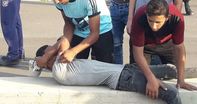
At least three Palestinians were shot and injured Tuesday evening after the Israeli Occupation Forces (IOF) opened fire at peaceful protesters gathered at Beit Hanoun (Erez) crossing.
Clashes erupted when IOF attacked dozens of Palestinians gathered at Beit Hanoun crossing demanding an international protection to the Palestinian refugees’ rights.
During the clashes, IOF heavily fired teargas bombs and live and rubber bullets at the protesters, injuring three of them.
The Higher National Commission for the March of Return and Breaking the Siege earlier called for mass and active participation in the march under the slogan “together to protest Palestinian refugees’ rights.”
The march came following the US decision to cut aid to the United Nations Relief and Works Agency for Palestine Refugees (UNRWA).
Clashes erupted when IOF attacked dozens of Palestinians gathered at Beit Hanoun crossing demanding an international protection to the Palestinian refugees’ rights.
During the clashes, IOF heavily fired teargas bombs and live and rubber bullets at the protesters, injuring three of them.
The Higher National Commission for the March of Return and Breaking the Siege earlier called for mass and active participation in the march under the slogan “together to protest Palestinian refugees’ rights.”
The march came following the US decision to cut aid to the United Nations Relief and Works Agency for Palestine Refugees (UNRWA).
3 sept 2018
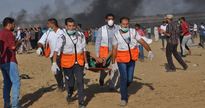
A Palestinian youth was shot and injured on Monday evening by Israeli bullet fire east of Khan Younis city, in the southern Gaza Strip.
A PIC news correspondent said Israeli soldiers stationed in military watchtowers along the borders to the east of Khan Younis city opened fire at a group of Palestinian youth gathering in the area, injuring one of them.
The youngster was rushed to a local hospital for urgent treatment.
The identity and health status of the injured youth remain unknown until the moment.
Attacks by the Israeli military on the non-violent Palestinian Great March of Return, staged at the Gaza border, took away the lives of 180 protesters, nine of whose bodies have been withheld by the occupation authorities. 14,000 others have been left wounded.
A PIC news correspondent said Israeli soldiers stationed in military watchtowers along the borders to the east of Khan Younis city opened fire at a group of Palestinian youth gathering in the area, injuring one of them.
The youngster was rushed to a local hospital for urgent treatment.
The identity and health status of the injured youth remain unknown until the moment.
Attacks by the Israeli military on the non-violent Palestinian Great March of Return, staged at the Gaza border, took away the lives of 180 protesters, nine of whose bodies have been withheld by the occupation authorities. 14,000 others have been left wounded.
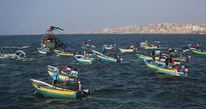
Israeli gunboats on Sunday afternoon attacked a flock of fishing vessels sailing off Gaza’s seashore, in a symbolic gesture aiming at breaking the tough Israeli blockade on the enclave.
A PIC news correspondent said Israeli warships targeted fishing boats with teargas canisters to force them to backtrack.
Hundreds of protesters who reached the northern borders off the Sudaniya coast were also hit with teargas.
Around 50 ships joined the boat parade, in the six such move staged by the National Commission to Break the Siege. Injured civilians, students, and disadvantaged Gazans took part in the protest event.
Shortly before the parade kickstarted, the commission stressed, in a press conference, Palestinians’ firm rejection of Israeli measures to establish a buffer zone in Gaza.
The commission called on the Israeli occupation to cease its aggressions against Gaza and lift the 12-year-old siege.
It further railed against the US decision to undermine the stability of the UN refugee agency, saying such moves will not succeed to change Palestinians’ inalienable rights.
A PIC news correspondent said Israeli warships targeted fishing boats with teargas canisters to force them to backtrack.
Hundreds of protesters who reached the northern borders off the Sudaniya coast were also hit with teargas.
Around 50 ships joined the boat parade, in the six such move staged by the National Commission to Break the Siege. Injured civilians, students, and disadvantaged Gazans took part in the protest event.
Shortly before the parade kickstarted, the commission stressed, in a press conference, Palestinians’ firm rejection of Israeli measures to establish a buffer zone in Gaza.
The commission called on the Israeli occupation to cease its aggressions against Gaza and lift the 12-year-old siege.
It further railed against the US decision to undermine the stability of the UN refugee agency, saying such moves will not succeed to change Palestinians’ inalienable rights.
2 sept 2018
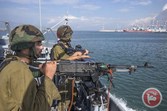
Israeli naval forces opened fire on a number of fishing boats and detained six Palestinian fishermen on Sunday in the besieged Gaza Strip.
According to local witnesses, Israeli naval forces detained six Palestinian fishermen in the central Gaza Strip as they were working within the permitted zone.
Witnesses identified the detainees as Zaki Ibrahim al-Najjar, Ahmad Mahmoud Abu Ryala, Mahmoud Jihad Abu Awda, Muhammad Jihad Abu Awda, Jihad Muhammad Abu Awda, and Muhammad Bahjat Abu Awda.
The reason for their detention remained unknown.
Several hours after the detention, Israeli naval forces opened fire on a number of Palestinian fishing boats in northern Gaza.
Sources added that Israeli naval forces continued to fire and chased down the fishing boats, forcing them to sail back to shore.
No injuries were reported.
As part of Israel's blockade of the coastal enclave since 2007, the Israeli army, citing security concerns, requires Palestinian fishermen to work within a limited "designated fishing zone," the exact limits of which are decided by the Israeli authorities and have historically fluctuated.
The Israeli army regularly detains and opens fire on unarmed Palestinian fishermen, shepherds, and farmers along the border areas if they approach the unilaterally declared buffer zone.
Israeli human rights group B’Tselem recently concluded that Israel’s Gaza closure and “harassment of fishermen” have been “destroying Gaza’s fishing sector,” with 95 percent of fishermen living below the poverty line.
According to local witnesses, Israeli naval forces detained six Palestinian fishermen in the central Gaza Strip as they were working within the permitted zone.
Witnesses identified the detainees as Zaki Ibrahim al-Najjar, Ahmad Mahmoud Abu Ryala, Mahmoud Jihad Abu Awda, Muhammad Jihad Abu Awda, Jihad Muhammad Abu Awda, and Muhammad Bahjat Abu Awda.
The reason for their detention remained unknown.
Several hours after the detention, Israeli naval forces opened fire on a number of Palestinian fishing boats in northern Gaza.
Sources added that Israeli naval forces continued to fire and chased down the fishing boats, forcing them to sail back to shore.
No injuries were reported.
As part of Israel's blockade of the coastal enclave since 2007, the Israeli army, citing security concerns, requires Palestinian fishermen to work within a limited "designated fishing zone," the exact limits of which are decided by the Israeli authorities and have historically fluctuated.
The Israeli army regularly detains and opens fire on unarmed Palestinian fishermen, shepherds, and farmers along the border areas if they approach the unilaterally declared buffer zone.
Israeli human rights group B’Tselem recently concluded that Israel’s Gaza closure and “harassment of fishermen” have been “destroying Gaza’s fishing sector,” with 95 percent of fishermen living below the poverty line.
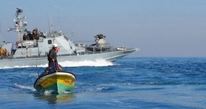
Six Palestinian fishermen were arrested by the Israeli occupation navy on Saturday evening while saling off Deir al-Balah seashore, in the central Gaza Strip.
Gaza Fishermen’s Union said Israeli gunboats chased down a vessel owned by fisherman Mohamed Abu Reyala and kidnapped six Palestinians onboard.
Israel’s navy troops also seized the fishermen’s boat.
The six fishermen are identified as Zaki Abu Odeh, Ahmad Abu Reyala, Mahmoud Abu Odeh and his brother Mohamed, Jehad Abu Odeh, and Mohamed Abu Odeh.
Gaza Fishermen’s Union said Israeli gunboats chased down a vessel owned by fisherman Mohamed Abu Reyala and kidnapped six Palestinians onboard.
Israel’s navy troops also seized the fishermen’s boat.
The six fishermen are identified as Zaki Abu Odeh, Ahmad Abu Reyala, Mahmoud Abu Odeh and his brother Mohamed, Jehad Abu Odeh, and Mohamed Abu Odeh.
1 sept 2018
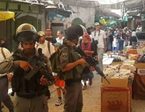
The Israeli occupation navy on Friday savagely attacked and opened machinegun fire at a group of Palestinian fishermen off the central and northern shores of the besieged Gaza Strip.
Local sources reported that Israeli gunboats tried to sink fishing during their presence within three nautical miles off the central coast of Gaza and kept attacking them with live ammunition and water cannons until they had to go ashore.
Earlier, fishermen reported their exposure to a similar attack off the northern shores of Gaza.
The fishermen said Israeli naval forces attacked them with live fire, forcing them to sail several nautical miles towards the southern part of Gaza in an attempt to avoid further assault, but the gunboat chased them.
The forces then intercepted and stopped the fishermen and sprayed them with water cannons, pushing one of them off the boat for an approximate distance of 12 meters.
The fisherman then swam back to the boat, while the navy sprayed it with more condensed water, damaging its engine and electronic equipment as well as all the cellphones belonging to the fishermen.
The navy then left the area, and the fishermen embarked on salvaging their boat before they managed to return to the shore.
Local sources reported that Israeli gunboats tried to sink fishing during their presence within three nautical miles off the central coast of Gaza and kept attacking them with live ammunition and water cannons until they had to go ashore.
Earlier, fishermen reported their exposure to a similar attack off the northern shores of Gaza.
The fishermen said Israeli naval forces attacked them with live fire, forcing them to sail several nautical miles towards the southern part of Gaza in an attempt to avoid further assault, but the gunboat chased them.
The forces then intercepted and stopped the fishermen and sprayed them with water cannons, pushing one of them off the boat for an approximate distance of 12 meters.
The fisherman then swam back to the boat, while the navy sprayed it with more condensed water, damaging its engine and electronic equipment as well as all the cellphones belonging to the fishermen.
The navy then left the area, and the fishermen embarked on salvaging their boat before they managed to return to the shore.
31 aug 2018

180 Palestinians were wounded by live ammunition and tear gas inhalation during confrontations with Israeli forces, on Friday.
According to the Ministry of Health, the number of participants wounded with live bullets, in Gaza’s Great March of Return, including a paramedic who was shot in the chest, to the east of Rafah, in the southern Gaza Strip, reached 180.
The Ministry announced that volunteer paramedic Shurooq Abu Musameh was seriously wounded in the chest by direct gunfire.
Local sources said that a number of journalists and paramedics were wounded by Israeli forces on the eastern border of the Gaza Strip while covering the Great March.
According to medical sources, Mohammed Abu Sultan a cameraman was shot in the foot during his coverage of confrontations in Eastern Rafah, south of the Gaza Strip; journalist Mohammed Zo’rob inhaled gas East of Khan Yunis.
In the West Bank, a number of Palestinians were injured during weekly nonviolent marches condemning Israeli settlement policies.
Israeli forces cracked down on a nonviolent protest near the village of Ras Karkar, northwest of Ramallah, in the occupied West Bank, according to local PNN sources.
Eye witnesses said that Israeli soldiers fired rubber-coated rounds and teargas canisters to disperse protesters who were performing Friday prayers on a land outside the village, which Israeli occupation authorities are planning to confiscate, in order to build a settlement.
Medical sources additionally reported that several cases of suffocation from teargas inhalation occurred among the protesters.
In another Israeli violation, a Palestinian child was injured on Friday, when he was hit by the shrapnel of a stun grenade fired by Israeli soldiers at Palestinian protesters in the village of Ni’iln, west of Ramallah.
Israeli soldiers fired stun grenades at demonstrators who were protesting near the village, against Israeli settlements and the apartheid wall, injuring an 12-year-old with the shrapnel of a stun grenade.
More than 171 Palestinians have been killed and 17,500 others injured since the outbreak of the Gaza border protests on March 30. The protests call for ending the 12-year-long Israeli blockade of Gaza and for the right of return of the refugees. video
According to the Ministry of Health, the number of participants wounded with live bullets, in Gaza’s Great March of Return, including a paramedic who was shot in the chest, to the east of Rafah, in the southern Gaza Strip, reached 180.
The Ministry announced that volunteer paramedic Shurooq Abu Musameh was seriously wounded in the chest by direct gunfire.
Local sources said that a number of journalists and paramedics were wounded by Israeli forces on the eastern border of the Gaza Strip while covering the Great March.
According to medical sources, Mohammed Abu Sultan a cameraman was shot in the foot during his coverage of confrontations in Eastern Rafah, south of the Gaza Strip; journalist Mohammed Zo’rob inhaled gas East of Khan Yunis.
In the West Bank, a number of Palestinians were injured during weekly nonviolent marches condemning Israeli settlement policies.
Israeli forces cracked down on a nonviolent protest near the village of Ras Karkar, northwest of Ramallah, in the occupied West Bank, according to local PNN sources.
Eye witnesses said that Israeli soldiers fired rubber-coated rounds and teargas canisters to disperse protesters who were performing Friday prayers on a land outside the village, which Israeli occupation authorities are planning to confiscate, in order to build a settlement.
Medical sources additionally reported that several cases of suffocation from teargas inhalation occurred among the protesters.
In another Israeli violation, a Palestinian child was injured on Friday, when he was hit by the shrapnel of a stun grenade fired by Israeli soldiers at Palestinian protesters in the village of Ni’iln, west of Ramallah.
Israeli soldiers fired stun grenades at demonstrators who were protesting near the village, against Israeli settlements and the apartheid wall, injuring an 12-year-old with the shrapnel of a stun grenade.
More than 171 Palestinians have been killed and 17,500 others injured since the outbreak of the Gaza border protests on March 30. The protests call for ending the 12-year-long Israeli blockade of Gaza and for the right of return of the refugees. video
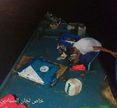
An Israeli navy ship fired, on Thursday evening, live rounds at a Palestinian fishing boat in the Sudaniyya Sea area, west of Gaza city, causing serious damage to the boat, in addition to spraying the fishermen and their boat with water cannons.
The fishermen said the navy attacked them with live fire, forcing them to sail several nautical miles towards the southern part of the Gaza Strip in an attempt to avoid further assaults, but the navy chased them.
The navy then stopped the fishermen and ordered them to stand at the edge of the boat before spraying them with water cannons, pushing one of them, identified as Misbah Nafeth Salah, off the boat for an approximate distance of twelve meters.
The fisherman then swam toward the boat, while the navy sprayed it with more condensed water, damaging its engine and GPS system.
The navy then left the area, and the fishermen started trying to salvage their boat, and managed to get back to the shore.
The fishermen said the navy attacked them with live fire, forcing them to sail several nautical miles towards the southern part of the Gaza Strip in an attempt to avoid further assaults, but the navy chased them.
The navy then stopped the fishermen and ordered them to stand at the edge of the boat before spraying them with water cannons, pushing one of them, identified as Misbah Nafeth Salah, off the boat for an approximate distance of twelve meters.
The fisherman then swam toward the boat, while the navy sprayed it with more condensed water, damaging its engine and GPS system.
The navy then left the area, and the fishermen started trying to salvage their boat, and managed to get back to the shore.
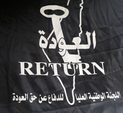
Israeli soldiers fired, on Friday morning, live rounds at the Great Return Camp, east of Khan Younis, in the southern part of the Gaza Strip.
Media sources said the soldiers, stationed on military towers near the perimeter fence, east of Khan Younis, fired many live rounds at the Palestinians, and added that the attacks did not lead to casualties.
The attack comes ahead of the Great Return March processions, which will be held today for the 23rd consecutive week since the nonviolent protests started on Palestinian Land Day, March 30th, 2018.
Since then, the army killed 171 Palestinians, including medics, journalists, women and children, and injured at least 18300 others, in several parts of the Gaza Strip.
Media sources said the soldiers, stationed on military towers near the perimeter fence, east of Khan Younis, fired many live rounds at the Palestinians, and added that the attacks did not lead to casualties.
The attack comes ahead of the Great Return March processions, which will be held today for the 23rd consecutive week since the nonviolent protests started on Palestinian Land Day, March 30th, 2018.
Since then, the army killed 171 Palestinians, including medics, journalists, women and children, and injured at least 18300 others, in several parts of the Gaza Strip.
27 aug 2018
|
|
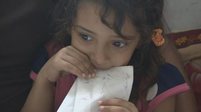
An Israeli air raid almost killed six-year-old Nama Abu Foul, in 2014, and she, like many of Gaza children, still deals with the physical and mental injuries suffered during wars on Gaza.
Half of Gaza’s population is under the age of 17, but many of them have already lived through three wars, and the scars, visible and otherwise, remain. Andrew Simmons visited a young girl still living with the trauma of a severe head injury she sustained in the 2014 war. 09/02/14 VIDEO: Gaza City’s Devastated Al-Shuja’eyya Suburb |
26 aug 2018
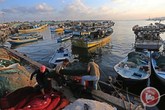
Two Palestinian fishermen were detained by Israeli naval forces on Sunday off the coast of the northern besieged Gaza Strip.
Nizar Ayyash, the boat captain, told Ma'an that Israeli naval forces detained two fishermen as they were working along the northern Gaza Strip coast and were taken to an unknown location.
The two detained fishermen were identified as Owrans al-Sultan and Hassan al-Sultan.
Ayyash added that Israeli naval forces also confiscated their fishing boat.
Meanwhile, Israeli forces opened fire towards Palestinian shepherds, north of Rafah district in southern Gaza. Reasons for the shooting remained unknown.
No injuries were reported among the shepherds.
The Israeli army regularly detains and opens fire at unarmed Palestinian fishermen, shepherds, and farmers along the border areas if they approach the unilaterally declared buffer zone.
The practice has in effect destroyed much of the agricultural and fishing sector of the blockaded coastal enclave, which has been under an Israeli air, land, and sea blockade for nearly 12 years.
Israeli human rights group B’Tselem recently concluded that Israel’s Gaza closure and “harassment of fishermen” have been “destroying Gaza’s fishing sector,” with 95 percent of fishermen living below the poverty line.
The Palestinian Union of Agricultural Work Committees (UAWC) issued its annual report for 2017 showing Israeli attacks against Palestinian fishermen in the besieged Gaza Strip, highlighting that “these attacks deny fishermen from practicing their fishing work and accessing their livelihood resources.”
Nizar Ayyash, the boat captain, told Ma'an that Israeli naval forces detained two fishermen as they were working along the northern Gaza Strip coast and were taken to an unknown location.
The two detained fishermen were identified as Owrans al-Sultan and Hassan al-Sultan.
Ayyash added that Israeli naval forces also confiscated their fishing boat.
Meanwhile, Israeli forces opened fire towards Palestinian shepherds, north of Rafah district in southern Gaza. Reasons for the shooting remained unknown.
No injuries were reported among the shepherds.
The Israeli army regularly detains and opens fire at unarmed Palestinian fishermen, shepherds, and farmers along the border areas if they approach the unilaterally declared buffer zone.
The practice has in effect destroyed much of the agricultural and fishing sector of the blockaded coastal enclave, which has been under an Israeli air, land, and sea blockade for nearly 12 years.
Israeli human rights group B’Tselem recently concluded that Israel’s Gaza closure and “harassment of fishermen” have been “destroying Gaza’s fishing sector,” with 95 percent of fishermen living below the poverty line.
The Palestinian Union of Agricultural Work Committees (UAWC) issued its annual report for 2017 showing Israeli attacks against Palestinian fishermen in the besieged Gaza Strip, highlighting that “these attacks deny fishermen from practicing their fishing work and accessing their livelihood resources.”
Page: 29 - 28 - 27 - 26 - 25 - 24 - 23 - 22 - 21 - 20 - 19 - 18 - 17 - 16 - 15 - 14 - 13 - 12 - 11 - 10 - 9 - 8
Truce violations List of names Pictures of martyrs
Days: Aug: 26 - 25 - 24 - 23 - 22 - 21 - 20 - 19 - 18 - 17 - 16 - 15 - 14 - 13 - 12 - 11 - 10 - 9 - 8 - 7 - 6 - 5 - 4 - 3 - 2 - 1
July: 31 - 30 - 29 - 28 - 27 - 26 - 25 - 24 - 23 - 22 - 21 - 20 - 19 - 18 - 17 - 16 - 15 - 14 - 13 - 12 - 11 - 10 - 9 - 8
